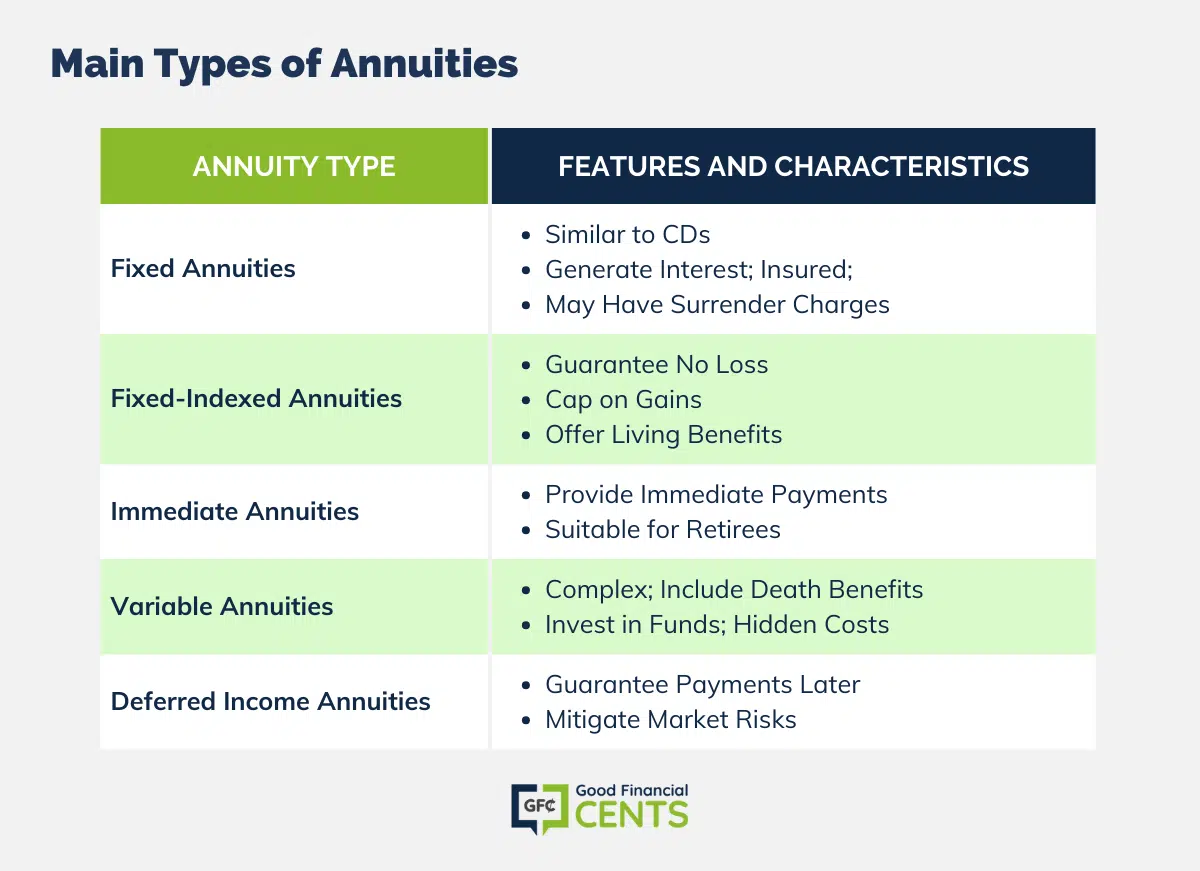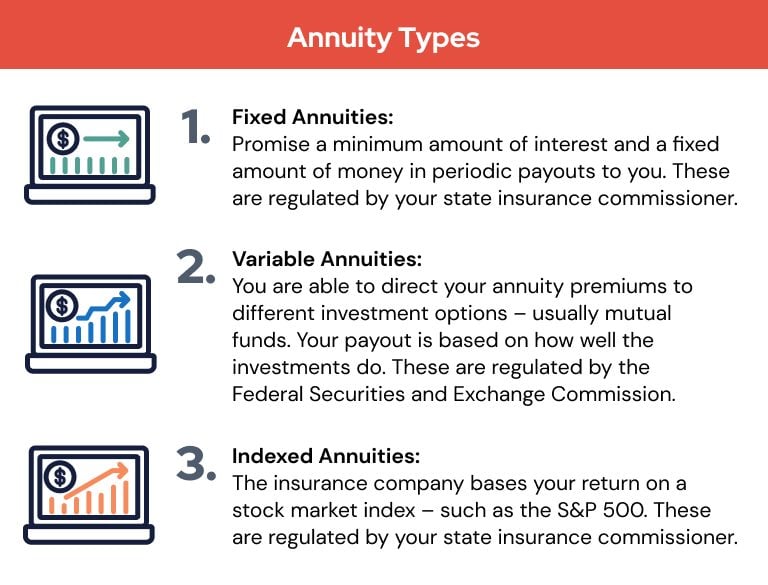All Categories
Featured
Table of Contents
The settlement could be spent for development for a lengthy period of timea single premium postponed annuityor spent momentarily, after which payout beginsa solitary premium instant annuity. Single premium annuities are commonly funded by rollovers or from the sale of a valued asset. A versatile premium annuity is an annuity that is intended to be funded by a series of settlements.
Proprietors of repaired annuities recognize at the time of their purchase what the value of the future cash money circulations will certainly be that are created by the annuity. Clearly, the variety of capital can not be recognized in advance (as this relies on the contract proprietor's life-span), yet the assured, fixed rates of interest at the very least offers the proprietor some level of certainty of future revenue from the annuity.
While this difference appears easy and simple, it can dramatically influence the value that a contract proprietor ultimately stems from his/her annuity, and it develops considerable uncertainty for the contract owner - Differences between fixed and variable annuities. It also normally has a material influence on the level of costs that a contract proprietor pays to the providing insurance provider
Fixed annuities are often used by older financiers that have actually restricted possessions but who desire to counter the risk of outliving their possessions. Fixed annuities can serve as an efficient device for this objective, though not without particular disadvantages. As an example, in the situation of prompt annuities, once a contract has actually been bought, the agreement owner gives up any kind of and all control over the annuity properties.
Highlighting the Key Features of Long-Term Investments A Closer Look at Tax Benefits Of Fixed Vs Variable Annuities What Is the Best Retirement Option? Features of Smart Investment Choices Why Variable Vs Fixed Annuity Is a Smart Choice Annuities Fixed Vs Variable: How It Works Key Differences Between Different Financial Strategies Understanding the Key Features of Fixed Annuity Vs Equity-linked Variable Annuity Who Should Consider Strategic Financial Planning? Tips for Choosing the Best Investment Strategy FAQs About Planning Your Financial Future Common Mistakes to Avoid When Planning Your Retirement Financial Planning Simplified: Understanding What Is A Variable Annuity Vs A Fixed Annuity A Beginner’s Guide to Immediate Fixed Annuity Vs Variable Annuity A Closer Look at Choosing Between Fixed Annuity And Variable Annuity
For instance, a contract with a common 10-year abandonment period would bill a 10% surrender cost if the contract was given up in the very first year, a 9% abandonment charge in the second year, and more till the surrender charge reaches 0% in the agreement's 11th year. Some postponed annuity agreements have language that permits little withdrawals to be made at different periods throughout the surrender duration scot-free, though these allocations typically come with a price in the type of lower guaranteed rates of interest.
Equally as with a dealt with annuity, the proprietor of a variable annuity pays an insurance provider a lump sum or series of payments in exchange for the promise of a collection of future settlements in return. But as pointed out over, while a taken care of annuity expands at an ensured, continuous rate, a variable annuity expands at a variable rate that relies on the efficiency of the underlying financial investments, called sub-accounts.
During the accumulation stage, properties purchased variable annuity sub-accounts grow on a tax-deferred basis and are taxed just when the agreement owner withdraws those profits from the account. After the build-up phase comes the earnings phase. Over time, variable annuity properties must in theory increase in worth till the agreement owner chooses she or he want to start taking out cash from the account.
The most substantial problem that variable annuities normally existing is high price. Variable annuities have numerous layers of charges and costs that can, in aggregate, produce a drag of up to 3-4% of the contract's value each year.
M&E expense costs are determined as a percentage of the contract value Annuity issuers hand down recordkeeping and other management costs to the contract owner. This can be in the type of a flat annual cost or a portion of the contract worth. Management costs may be included as part of the M&E threat cost or may be examined independently.
These fees can vary from 0.1% for easy funds to 1.5% or even more for proactively taken care of funds. Annuity contracts can be tailored in a number of methods to serve the particular requirements of the contract proprietor. Some typical variable annuity motorcyclists include guaranteed minimal build-up advantage (GMAB), guaranteed minimum withdrawal advantage (GMWB), and guaranteed minimum revenue advantage (GMIB).
Analyzing Choosing Between Fixed Annuity And Variable Annuity Everything You Need to Know About Financial Strategies Defining the Right Financial Strategy Advantages and Disadvantages of Pros And Cons Of Fixed Annuity And Variable Annuity Why Choosing the Right Financial Strategy Can Impact Your Future Variable Annuity Vs Fixed Indexed Annuity: How It Works Key Differences Between Fixed Annuity Or Variable Annuity Understanding the Risks of Fixed Interest Annuity Vs Variable Investment Annuity Who Should Consider Variable Vs Fixed Annuity? Tips for Choosing the Best Investment Strategy FAQs About Planning Your Financial Future Common Mistakes to Avoid When Choosing Choosing Between Fixed Annuity And Variable Annuity Financial Planning Simplified: Understanding Your Options A Beginner’s Guide to Smart Investment Decisions A Closer Look at How to Build a Retirement Plan
Variable annuity payments give no such tax obligation deduction. Variable annuities tend to be very ineffective lorries for passing wealth to the future generation because they do not take pleasure in a cost-basis modification when the original agreement proprietor dies. When the owner of a taxed financial investment account passes away, the cost bases of the investments held in the account are gotten used to show the marketplace prices of those investments at the time of the proprietor's death.
Successors can acquire a taxed financial investment profile with a "clean slate" from a tax obligation perspective. Such is not the instance with variable annuities. Investments held within a variable annuity do not obtain a cost-basis adjustment when the initial proprietor of the annuity passes away. This means that any accumulated unrealized gains will be handed down to the annuity owner's beneficiaries, in addition to the associated tax obligation concern.

One substantial concern connected to variable annuities is the possibility for conflicts of rate of interest that might feed on the component of annuity salespeople. Unlike an economic consultant, that has a fiduciary task to make financial investment choices that benefit the client, an insurance coverage broker has no such fiduciary obligation. Annuity sales are highly financially rewarding for the insurance specialists who sell them due to high in advance sales compensations.
Lots of variable annuity contracts have language which puts a cap on the percentage of gain that can be experienced by particular sub-accounts. These caps prevent the annuity owner from totally joining a section of gains that can otherwise be appreciated in years in which markets create considerable returns. From an outsider's point of view, presumably that capitalists are trading a cap on investment returns for the previously mentioned guaranteed floor on financial investment returns.
Breaking Down Tax Benefits Of Fixed Vs Variable Annuities Everything You Need to Know About Variable Annuity Vs Fixed Annuity Defining the Right Financial Strategy Features of Smart Investment Choices Why Annuities Fixed Vs Variable Matters for Retirement Planning How to Compare Different Investment Plans: Explained in Detail Key Differences Between Different Financial Strategies Understanding the Risks of Long-Term Investments Who Should Consider Choosing Between Fixed Annuity And Variable Annuity? Tips for Choosing the Best Investment Strategy FAQs About Variable Vs Fixed Annuities Common Mistakes to Avoid When Planning Your Retirement Financial Planning Simplified: Understanding Your Options A Beginner’s Guide to Pros And Cons Of Fixed Annuity And Variable Annuity A Closer Look at How to Build a Retirement Plan
As kept in mind above, surrender costs can severely restrict an annuity proprietor's ability to move assets out of an annuity in the very early years of the contract. Further, while many variable annuities allow contract proprietors to take out a defined amount during the build-up stage, withdrawals yet amount generally result in a company-imposed charge.
Withdrawals made from a set rate of interest investment choice could also experience a "market price modification" or MVA. An MVA readjusts the value of the withdrawal to reflect any kind of adjustments in rates of interest from the moment that the money was spent in the fixed-rate alternative to the time that it was withdrawn.

Frequently, also the salespeople that offer them do not totally understand just how they work, and so salesmen occasionally victimize a buyer's emotions to sell variable annuities as opposed to the merits and viability of the items themselves. We think that capitalists ought to totally understand what they own and just how much they are paying to have it.
However, the exact same can not be said for variable annuity assets held in fixed-rate financial investments. These assets lawfully come from the insurer and would certainly therefore go to danger if the firm were to stop working. Any kind of warranties that the insurance firm has agreed to offer, such as a guaranteed minimum income advantage, would certainly be in inquiry in the occasion of a service failure.
Breaking Down Variable Annuity Vs Fixed Annuity A Comprehensive Guide to Retirement Income Fixed Vs Variable Annuity Breaking Down the Basics of Investment Plans Benefits of Choosing the Right Financial Plan Why What Is A Variable Annuity Vs A Fixed Annuity Is a Smart Choice How to Compare Different Investment Plans: How It Works Key Differences Between Tax Benefits Of Fixed Vs Variable Annuities Understanding the Key Features of Long-Term Investments Who Should Consider Fixed Annuity Vs Equity-linked Variable Annuity? Tips for Choosing the Best Investment Strategy FAQs About Planning Your Financial Future Common Mistakes to Avoid When Choosing Fixed Interest Annuity Vs Variable Investment Annuity Financial Planning Simplified: Understanding Your Options A Beginner’s Guide to Smart Investment Decisions A Closer Look at Fixed Interest Annuity Vs Variable Investment Annuity
Prospective buyers of variable annuities must understand and think about the monetary condition of the providing insurance coverage firm before getting in into an annuity contract. While the benefits and drawbacks of different kinds of annuities can be debated, the genuine issue surrounding annuities is that of viability.
Nevertheless, as the claiming goes: "Buyer beware!" This post is prepared by Pekin Hardy Strauss, Inc. ("Pekin Hardy," dba Pekin Hardy Strauss Wealth Monitoring) for educational objectives just and is not planned as a deal or solicitation for organization. The information and information in this write-up does not comprise legal, tax, bookkeeping, financial investment, or other specialist advice.
Table of Contents
Latest Posts
Highlighting Fixed Indexed Annuity Vs Market-variable Annuity A Closer Look at How Retirement Planning Works Defining Variable Vs Fixed Annuities Pros and Cons of Fixed Vs Variable Annuity Pros And Co
Exploring Variable Annuity Vs Fixed Annuity Key Insights on Your Financial Future Defining the Right Financial Strategy Features of Annuity Fixed Vs Variable Why Variable Annuities Vs Fixed Annuities
Analyzing Strategic Retirement Planning Key Insights on Your Financial Future What Is Choosing Between Fixed Annuity And Variable Annuity? Pros and Cons of Various Financial Options Why Choosing the R
More
Latest Posts